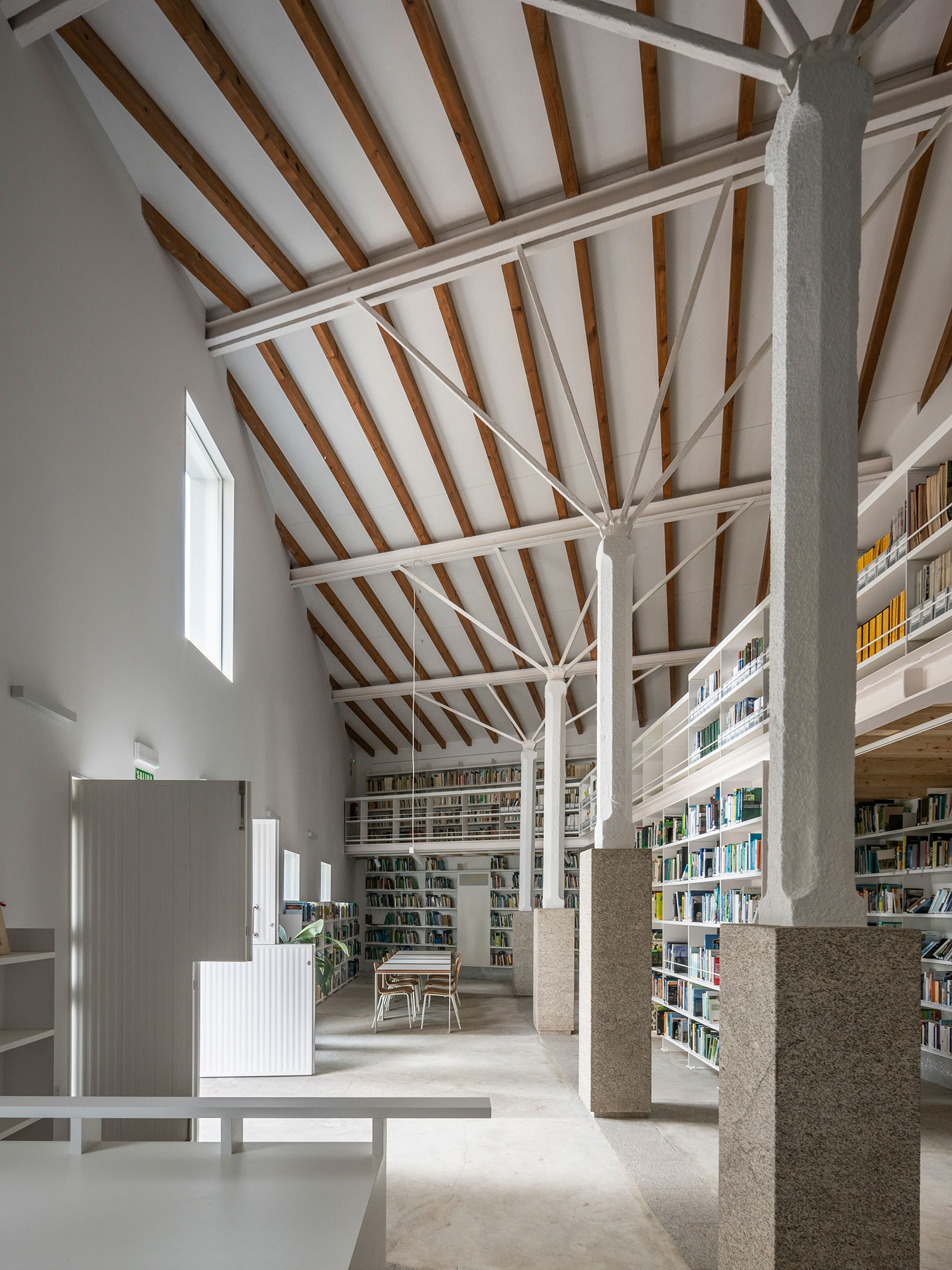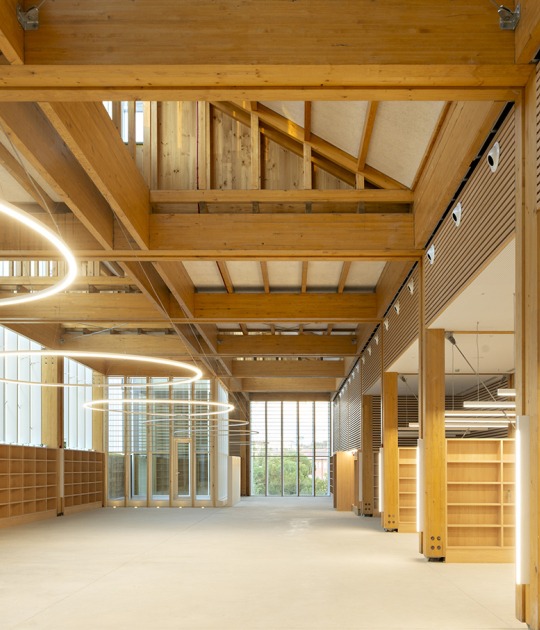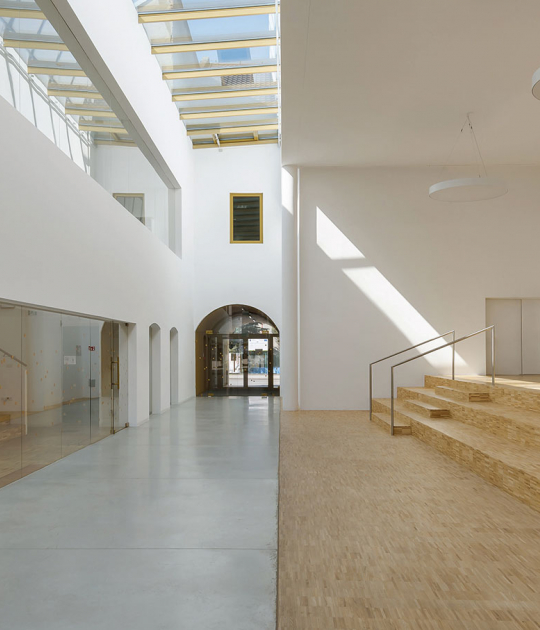The Forest Library is an example of a new urban rehabilitation trajectory in the region, carefully planned to protect and support a living cultural heritage. The objective of the proposal is to maintain the exterior volume, provide the requested consultation and research spaces, create a low-consumption conditioning system with a minimum environmental footprint, and offer a comfortable and welcoming environment to its users.
The intervention creates work and consultation spaces without compartmentalizing the available space, with a perimeter skin of shelves that integrate technical solutions and support the horizontal structure of the mezzanine.
The proposal is enriched by the use of the original stones of the stables that are integrated into the central supports, on which are arranged some interesting fans of metal rods that support the roof.

Description of project by Fernando Agrasar, Luz Paz Agras, Marta Marcos
On the grounds of the Pazo de Lóngora, in the Oleiros Town Hall, A Coruña, the old stables building is being converted into a public library dedicated to environmental content.
The old stables of the Pazo are in the southeast corner of its walled enclosure, between the interior gardens of the Pazo and the Bosque dos Veciños, which are publicly owned. In 2001, the architect Fernando Agrasar drew up a rehabilitation project for the stables building and its surroundings, then in ruins. In 2002, this intervention was carried out, which maintained the volume and its openings, protected by heritage regulations, rebuilding its interior, removing a wooden slab on which the hay was stored, and reusing the stone supports to arrange new elements. of stone and metal that support the new cover, then fallen.
Twenty years later and without the building being used, the refurbishment project was undertaken to house the public library of environmental contents of the Center for University Extension and Environmental Dissemination of Galicia (CEIDA). This project is developed with the following objectives and conditions: maintain the exterior volume; host the CEIDA catalogue and job posts; provide the consultation and research spaces demanded without increasing the existing volume; create a conditioning system with low consumption and a minimum environmental footprint; offer a comfortable and welcoming environment for workers and users and reuse all possible elements, without giving up the creation of a unique space.
The intervention creates work and consultation spaces without compartmentalizing the available space, with a perimeter skin of shelves that integrate technical solutions and support the horizontal structure of the mezzanine. The central supports combine pieces of stone reused from the stables, on which fans of metal rods are arranged that support the roof. The ladder is hung from the brochal of the hole with steel plates that partially close it and create the steps. The furniture is part of the intervention project, integrating itself into the architecture of the library. The lighting proposal, both inside and outside, has sought integrated solutions, such as LED lines in structural metal elements or the one that converts the volume of the windbreak into a lantern that illuminates the access when it gets dark plaza.
The work was promoted by the Oleiros City Council, with funding from the Amancio Ortega Foundation. The library is open to the public from February 2022.


















































